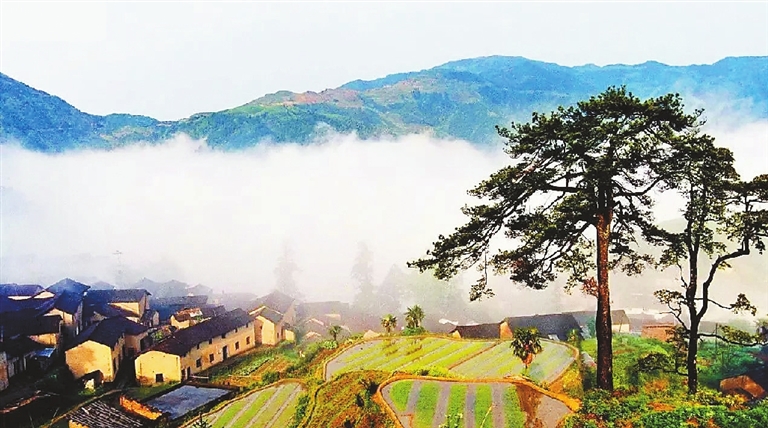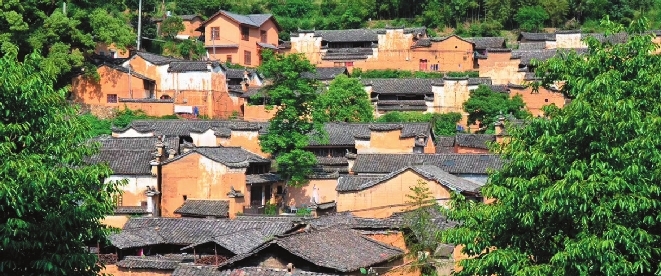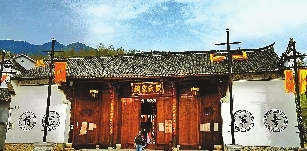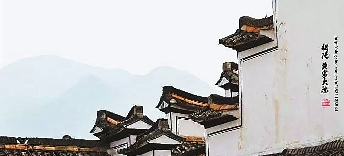



WHILE Hongcun Town and Wuyuan are crowded with more and more tourists, and Zhouzhuang and Wuzhen ancient towns grow increasingly commercialized, an ancient town hidden in the Zhejiang Province, which is still unknown to most people, went viral online recently thanks to a short video. It’s a living ancient town where handicraft workshops are still operating, and where locals found plowing, drawing water, pasturing cattle and picking tealeaves are not just a ploy for luring tourists, but their authentic daily activities. The town, actually a county, is called Songyang, and it enjoys a reputation as “the most beautiful village in China” and was praised as “the last fairyland in Jiangnan” by Chinese National Geography. Located on the southern hillside of Changsong Mountain, this county is named after its location. In the ancient Chinese, the southern hillside is regarded as yang. The history of Songyang can be traced back to the fourth year of Jian’an Period in the Eastern Han Dynasty (25-220), more than 1,800 years ago. The county lies in the largest mountainous plain in southwest Zhejiang surrounded by hills and mountains in four sides, and preserves more than 100 traditional villages. The landscape of Songyang can be concluded in short words: 80 percent mountainous, 10 percent rivers and 10 percent fields. The county is hidden in the mountainous Songgu, whilst the villages and terrace fields are located on the hills. The condition of the mountainous villages is much better than that of the flat-land villages. With the undulating inclines of the mountains and the various terrains of creeks, forests and rocks, the mountainous villages present a varied landscape. The differences in the altitude of the villages constitute a magnificent vertical landscape visually. Jieshou Village is the first village for you to enter Songyang. It’s home to over 800 residents and enjoys a time-honored history. There are an array of historical relics dating back to the Shang (2,100-1,600 B.C.) and Zhou (1,600-356 B.C.) dynasties, and the Tang Dynasty (618-907) and Song Dynasty (960-1279). Yangjiatang Village, with its mottled yellow mud walls, tells you the story of the village as time goes by. The video that went viral on Douyin, a short video app in China, was taken right here. Huanggang Village is home to over 100 mud and brick huts surrounded by green pines and over 1,500 mu of bamboo forest. The curling cloud and mist endow it with a historic and mysterious air. Deep in the forest lies the Zhuyuan Gorge waterfalls. Thanks to its high mountains, strange-shaped rocks, clean water and deep ponds, the gorge is one in the first batch of “top 10 green gorges in Zhejiang” list. Xikeng Village turns into a fairyland in rainy days when the clouds curl up in the mountains and surround the village. In the mountainous Songzhuang Village, a lifestyle of working at sunrise and ending at sunset is still well-kept. The ink-and-wash-style Houzhai Village is home to lush mountains, ancient pines and red walls. Come and indulge yourself in this artistic conception. Pingtian Village, located at an altitude of 610 meters, is encompassed by cloud and mist in the early morning and sunset glow at dusk, hence the nickname of “Pingtian in the cloud.” In Huang Compound, far away from hustle and bustle, the elegant traditional Hui-style architectural element Ma Tau Wall is best represented. The wood carving art here is quite amazing. It has made into the Chinese National Geography more than once. (Chen Xiaochun) | 
